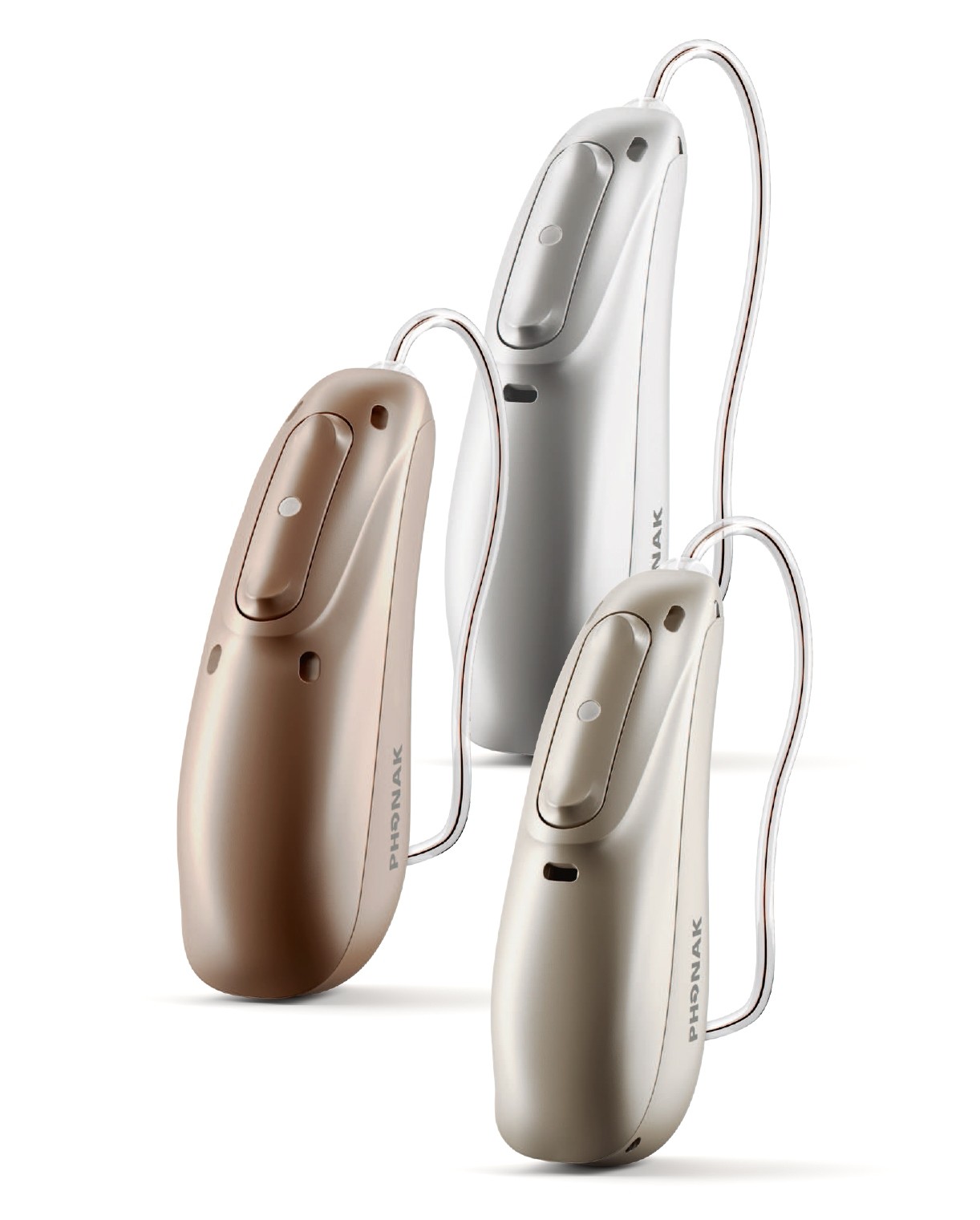
Would you believe us if we said there are a total of 335 different Phonak Lumity hearing aids to choose from?
That can feel slightly overwhelming when it comes to finding the right fit for you, but fear not. Whether you’re just starting to explore the option of hearing aids and want to be armed with information before going to an audiology appointment, or perhaps you’ve already had your hearing tested and have been recommended Phonak Lumity hearing aids, by the end of this article, you should have a great understanding of which Phonak Lumity hearing aid is right for you.
Five different styles of Phonak Lumity hearing aids
Phonak has typically used the same names for their different styles of hearing aids:
- Slim – their receiver-in-canal slimline hearing aid
- CROS – their receiver-in-canal hearing aid designed to manage single-sided deafness
- Audéo – their standard receiver-in-canal model
- Naida– their power behind-the-ear hearing aid
- Sky – their behind-the-ear paediatric hearing aids
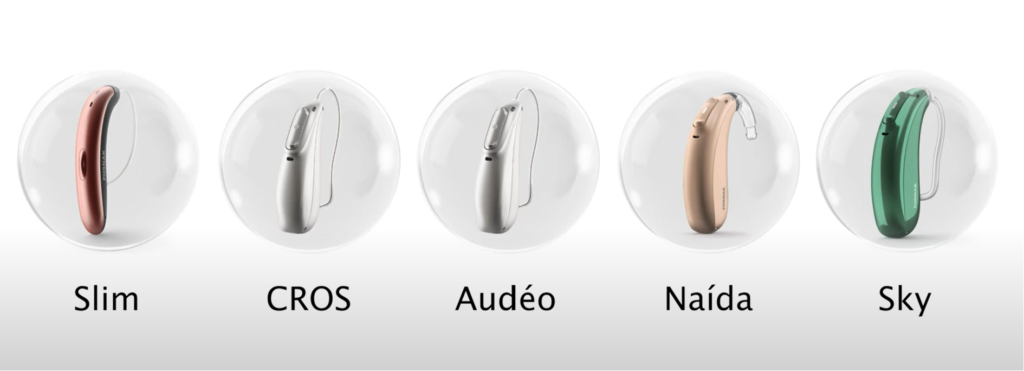
Within each of these styles, there can be various models too. For example, while there’s only one version of both the Slim and CROS, there are three different Audéo Lumitys – including the Audéo Lumity R, the Audéo Lumity RT, and the Audéo Lumity RL. Within the Naida style, we have the Naida Lumity PR and the Naida Lumity UP. Finally, the Sky Lumity also has two different models, which are also named the PR and UP.
So, the big question is, what do these letters mean after the different hearing aid models? It’s all about rechargeability, CROS systems, telecoil, and waterproof ratings.
Rechargeability
Most of the hearing aids we’re discussing today are rechargeable, which means that for a 3-hour charge when you go to bed, you’ll get a full day of use the following day. From a rechargeability point of view, one of these hearing aids stands head and shoulders above the rest, which is the Lumity Life.
To maintain the highest possible waterproof rating out of all of the hearing aids discussed today, Phonak has removed its titanium charging contacts and instead installed an inductive charging system. This requires a completely different charger, which happens to a) be easier to remove the hearing aids from and b) also contains a standalone battery, storing up to three full days of charge within the charger itself. So, your hearing aids can be charged on the go without always needing to be plugged into the mains.
This is great if you are someone who likes to go travelling when you may not have access to a power source. You can keep the hearing aids stored in the case, and they’ll be constantly charging. Both the Naida and Sky UP, however, are the only models which use a disposable 675 battery, and this only needs changing roughly once every one to two weeks.
CROS/BICROS
The Phonak CROS system is Phonak Lumity CROS/BICROS specifically designed for somebody with an unaidable hearing loss in one ear, i.e., no hearing at all, and either normal hearing or a hearing loss that requires a hearing aid in the other.
This receiver-in-canal style device is essentially a transmitter that detects any sound that arrives on your poorer hearing side and then wirelessly transmits the sound that reaches it to your better hearing ear, giving you access to the world of sound around you in 360°.
This kind of technology can make a huge difference when it comes to managing single-sided deafness. For example, if you’re a passenger in a car with your unaidable ear towards the driver, a cross-system would transmit their voice to a hearing aid in your better hearing ear, allowing you to hear them.
Now, not all of today’s hearing aids will work with the cros-system, so if you’re looking at wearing hearing aids to manage single-sided deafness, then you need to choose either the Audéo R or RT receiver-in-canal hearing aids or the Naida or Sky PR behind-the-ear hearing aids.

Telecoil
If you’re not completely familiar with a telecoil, you may, however, have seen this sign at various public venues such as the likes of a supermarket, lecture hall, church, or theatre.

This shows that the venue has a built-in loop system to work with a telecoil built into various types of hearing aids. When configured, this setup allows you to wirelessly connect your hearing aids with a click of a button to a microphone set at a distance, and you should be able to hear the person speaking into that microphone just as if you were standing next to them. It will completely transform your ability to hear speech at a distance.
Now, of all the Lumity hearing aids discussed today, the Audéo RT, Naida UP, and Sky UP all have a built-in telecoil, which means that Phonak has provided a wide range of styles to choose from. So as long as you can forgo the waterproof version, having the telecoil built-in is an invaluable option.
Waterproofing
Whilst we’re on the subject of how waterproof and how robust the Lumity family of hearing aids is, every model that we’re covering today has a minimum standard of an IP68 rating. This means that they can technically be submerged in a metre and a half of water for 30 minutes, and they should still function afterwards.
The IP68 rating isn’t just reserved for hearing aids. You’ll find it built into a lot of the technology that you use daily, such as your phone. Unlike other manufacturers, the IP68 rating is the minimum standard that Phonak has set for their hearing aids. This means that they’ve set the bar even higher than that.
So if you’re someone who spends a lot of time in or near water, or perhaps you sweat a lot
when you’re doing exercise, or maybe you’re just concerned about the reliability of hearing aids, then there’s one hearing aid from today’s list which has been tested to its limits.
The letters in the Audeo Lumity RL stand for rechargeable and life, which Phonak boasts as being their “Life Proof” hearing aid. It’s their most robust hearing aid to date. With this model, they’ve added additional microphone protection, sealed the seams with silicone, coated the components with a Paraline coating (which is the same protection system that NASA uses on their spacecraft), and there’s a different charging system too.
With all of that done, they have brutally tested this technology in the lab to ensure that it does what they promise. This robustness testing includes a simulated sweat test, representing two workouts a week for a 5-year period, a seawater test, a saltwater test, a chlorinated water test (simulating two swims per week over a 5-year period), and finally freshwater testing, which is performed in a pressurised container testing down to a depth of 50 cm, 520 times.
So if you’re someone who’s had issues with either moisture or reliability in the past, then the Audeo Lumity Life may well be the right hearing aid for you from today’s list. But remember, this does come at a cost, and you’ll have to sacrifice both a telecoil and CROS compatibility.
Phonak Lumity colour options
Another thing that we’re spoiled for choice with is the different colours of the hearing aids, which vary depending on the style that you’re choosing.
The Slim is available in these four different colours.

All of the Audéos, so the R, RT, and L, including the CROS, are now available in 11 different colours, including some new, more vibrant colour options too.
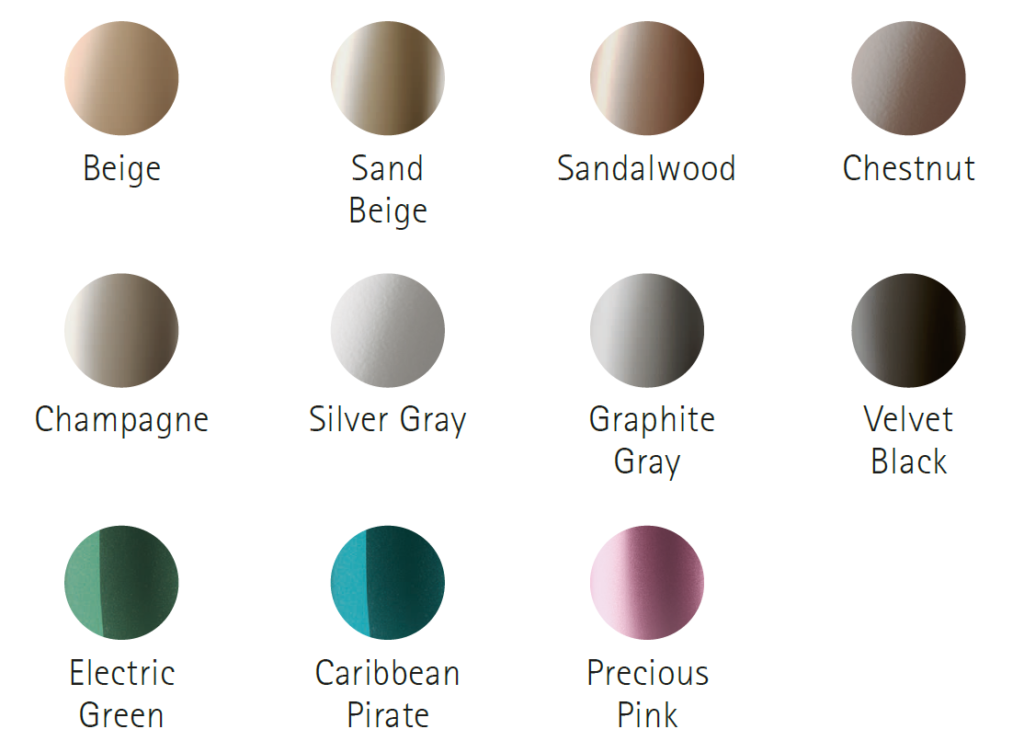
The Naida PR and UP are available in eight different colours, and then finally, whether you’re a child or not, you may well be interested in these incredible colours for the Sky family.

Which is the most suitable for your hearing loss?
Each style of hearing aid also has its very own fitting range, which is the degree of hearing loss that it’s capable of dealing with. Press play on the video below to find out more about the suitability of each device:
Which one uses ActiveVent?
ActiveVent is a feature unique to Phonak’s receiver-in-canal styles of hearing aids. It’s compatible with both Slim, Audéo R, RT, and then the Life models.
ActiveVent is a specific type of receiver with a built-in moving piston that changes its position depending on your listening environment, and it can either divert more or less sound naturally down your ear canal or, on the contrary, via the hearing aids. This, in turn, will change a few different things, such as:
- how well you hear in noise
- how your own voice sounds
- how clearly you hear
- how music sounds when it’s being streamed from your phone
There are both positives and negatives to having your ear canals either open or closed, and depending on your hearing loss, sometimes it’s beneficial to have a hearing aid that can do both on different occasions, which until ActiveVent was released, wasn’t possible. For example, in a quiet environment, you may well want the vent to be open, allowing natural sound in and out, giving you a nice, natural feeling connecting you with your environment. Yet when in noise, it’s better to have your ears completely closed so that all of the sound that you hear is via your hearing aids, having been cleaned of background noise. And the same thing goes for music and streaming.
So when you’re streaming from your phone, the ActiveVent would close, both blocking sound in and also blocking sound out, which would enhance music further still, giving you greater fullness, richness, and depth with any sound being streamed from your phone.
Bluetooth compatibility
All of the Phonak Lumity hearing aids have classic Bluetooth built-in, no matter what the style, and they can be paired with your phone, and not just an Android or iPhone device, but in fact, any Bluetooth device whatsoever.
In fact, you can pair with up to eight Bluetooth devices at one time, with two of them being able to be connected simultaneously. This means that you can stream phone calls, music, and the radio or podcasts directly to both of your ears. Plus, there’s even an app called the MyPhonak app, which allows you to make manual adjustments to the settings on your hearing aids. Not only that, but if you can’t make it to the clinic one day, your audiologist can dial into your hearing aids via your phone and make adjustments while you’re sat in the comfort of your own home. Pretty clever, eh?
Technology levels
So that pretty much covers all of the feature differences between the various styles of Phonak Lumity hearing aids. Yet, what it doesn’t cover are all of the features built into the different technology levels too. Each style is available in different technology levels too, which are represented by the number that you can see after the style of the hearing aid.
So, all Lumity hearing aids are available as either a 90, 70, 50, or 30, with the 90 being Phonak’s premium technology, the 70 the advanced, the 50 is the standard technology level, and then the 30 is Phonak’s essential technology level.
Building on that, let’s explain how these different technology levels affect your ability to hear. Every hearing aid manufacturer tends to do something, and this isn’t just limited to Phonak: they create the best possible hearing aids they can with the technology and the research and development that’s available at that particular moment in time. Then, they’ll brand this as their premium hearing aid, which in this instance is the Lumity 90. There are various technology levels beneath that, with certain features stripped away. So, let’s cover which technology levels have which features.
AutoSense 5.0
This is Phonak’s artificial intelligence, machine learning feature that scans your environment 700 times per second and then calculates the most appropriate setting for your hearing aid to switch over to. With the premium technology level, the L90s will choose between the following different settings based on the environment it detects you’re in. Once the hearing aids have recognized the environment, they’ll then choose from over 200 different setting combinations in order to optimise your hearing in that situation.
You can see here that as the technology levels decrease, the options that the AutoSense setting is able to switch over to also decrease.
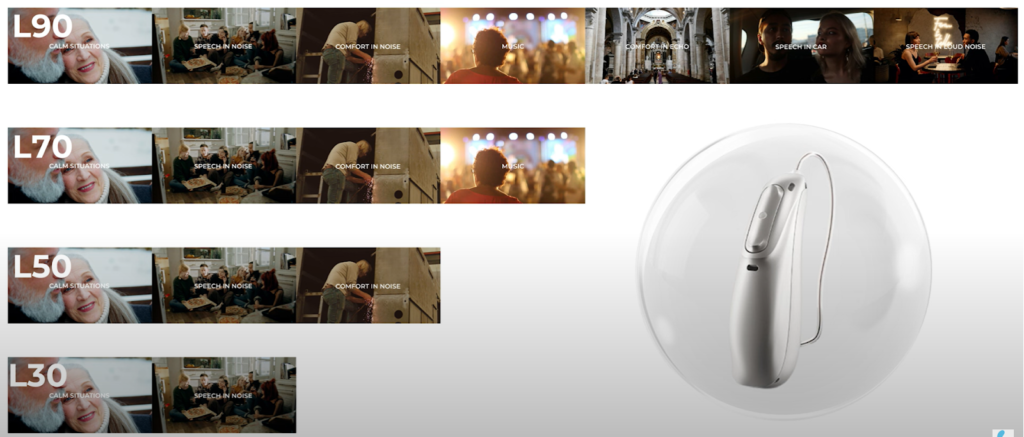
If you’re looking for the most appropriate technology level for you, you’ve got to think about not just your hearing test results but also your lifestyle. If you’re somebody who interacts with other people in varied environments, then the premium technology level may well be the most appropriate for you and your hearing loss.
Speech technology
Phonak’s Smart Speech technology is their built-in system designed to optimise hearing speech in all listening situations, from quietly spoken people to those in a noisy environment. The Lumity hearing aids have a few different impressive features that make this work.
Again, with the premium technology level, the L90s run all of these features, and we’ll show you which are stripped away depending on the technology you step down to.
First, we have their clever built-in Speech Sensor feature which will enhance your hearing in background noise and is designed to improve your hearing of conversations from the right, left, or behind you. Phonak states that while the majority of conversations generally come from in front of us, around 20% come from either the side or from behind. One downside of older directional microphone technology is that it can focus so aggressively in front of you that it may miss somebody speaking to you from other angles.
This new Speech Sensor feature is designed to identify those conversations happening close by and then open up that beamformer to a more omnidirectional setting, allowing you to pick up that speech without necessarily needing to turn your head and face the person speaking to you. We all know that person in our lives who speaks incredibly softly, and even with normal hearing, it’s not easy to catch what they’re saying.
The Speech Enhancer feature very simply looks out for those softly spoken people and gives them the boost they need to bring them within your audible range.
So, of those two features, both the Speech Sensor and Speech Enhancer are only available in the L90 premium technology level.
Stereozoom 2.0
The next two features are built into both the L90 premium technology level and the L70 advanced technology level.
Starting with Stereo Zoom 2.0, this is Phonak’s directional microphone technology. Stereo Zoom 2.0 is very simply designed to focus the microphones of your hearing aids forward when you’re in a noisy environment, such as a restaurant for example.
This is all with the hope that you want to hear whatever you’re looking at. Phonak boasts that this should give you a better signal-to-noise ratio by up to 2.5 dB, resulting in a 16% better speech understanding compared to fixed directional settings of previous versions of their Stereo Zoom.
Secondly, with Dynamic Noise Cancellation, you have the ability to set the strength of the noise reduction settings in real-time based on your personal preferences. This is all done using the MyPhonak app, which means you can set this feature to your preference of comfort or audibility in a particularly challenging and noisy environment.
Motion Sensors
Phonak has included the motion sensors in the premium, advanced, and standard technology levels respectively: the L90s, L70s, and L50s.
It allows AutoSense 5.0 to calculate the direction that you most likely want to be hearing from. So in practice, if you’re sat down at a table, you’d normally want to hear the sound in front of you. However, if you think about it, as soon as you stand up and start walking away, you’d want to be able to hear the person by your side. The motion sensors help the hearing aids recognise this and adjust the directionality of the microphones accordingly.
This is all happening automatically, without you needing to make any adjustments to the settings.
Compatible accessories
Phonak has been great at recognising where hearing aid technology alone will struggle to overcome certain hearing challenges. As a result, they have a wide range of different accessories from the TV connector to their Roger range, which includes the Roger On Version 2, Table Mic 2, Touchscreen Mic, Roger Select, and Roger Neckloop.
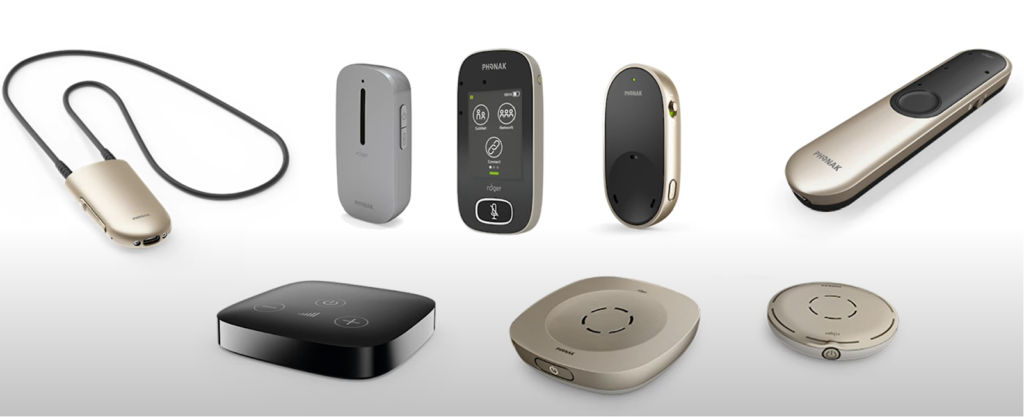
If you’re interested in more details on Phonak’s accessories, watch this video. You’ll be pleased to know that all of these accessories will work with all technology levels discussed today.
Tinnitus Balance Feature
If you’re one of the 10% or 25 million people in the US that suffers with tinnitus, then you may also benefit from Phonak’s Tinnitus Balance feature, which is also available across all technology levels. These are a selection of noises ranging from being tailored to your hearing loss to white noise and pink noise, which can be further adjusted to help you overcome your tinnitus.
So, as you can see, there are a wide range of options to choose from when it comes to the Phonak Lumity family of hearing aids, with various advantages to different styles and
different technology levels.
Phonak Lumity feature review
Matthew Allsop is a Partner at Harley Street Hearing, and the content creator for Hearing Tracker, where he shares his honest opinion on all new hearing aid technology. Hearing Tracker is the world’s first truly independent resource for hearing aid customers. You can view his video where he shares his opinions on the Phonak Lumity features below.
Enjoy this article? You might be interested in some of our others:
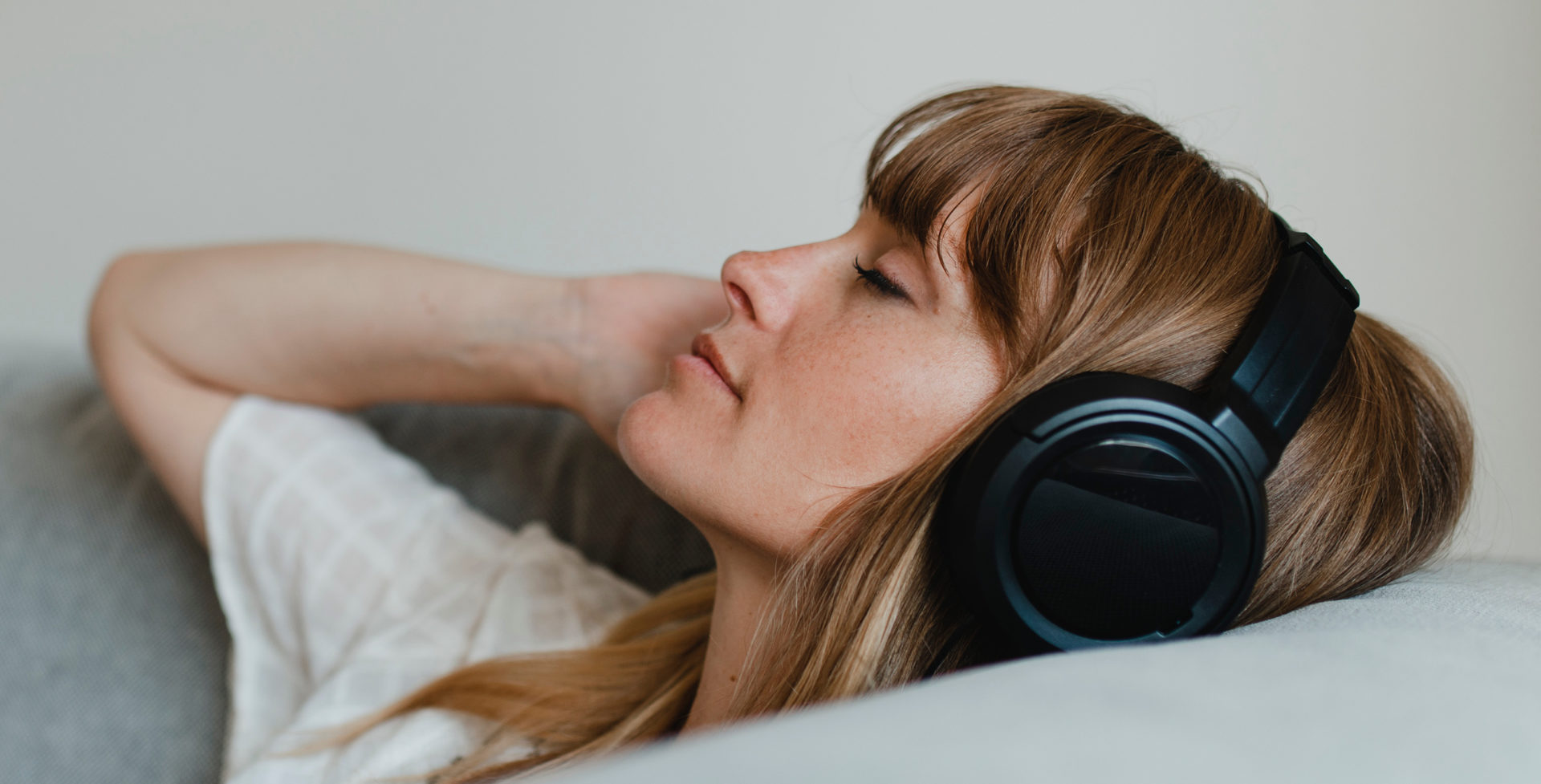
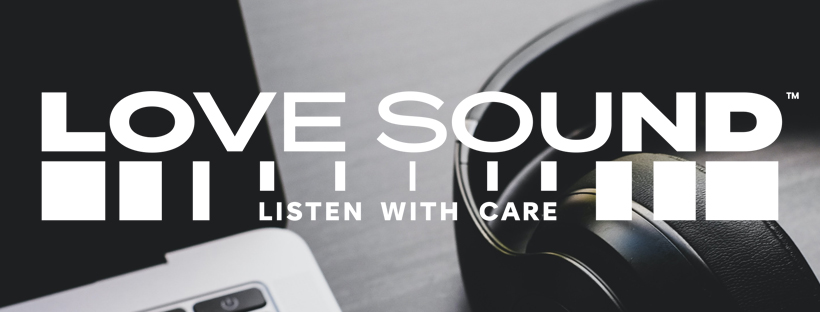

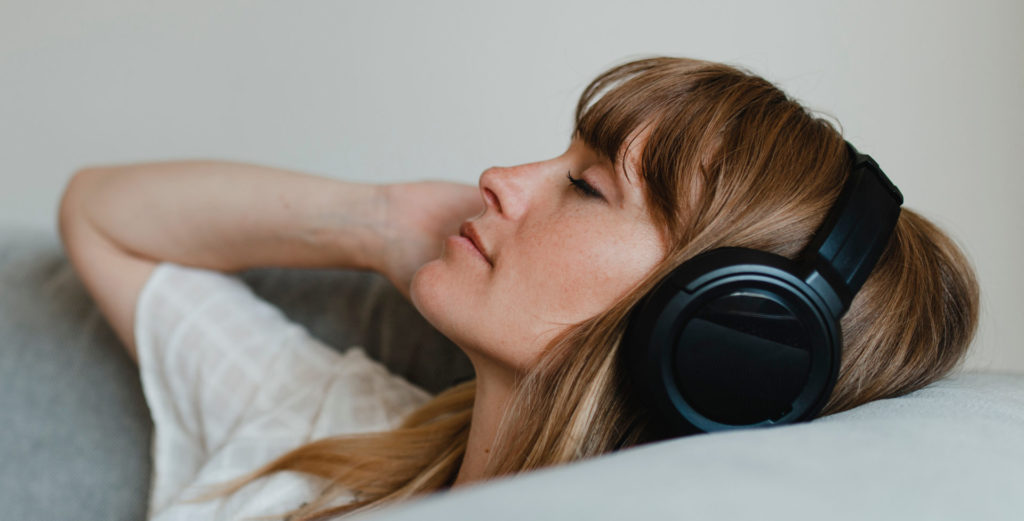

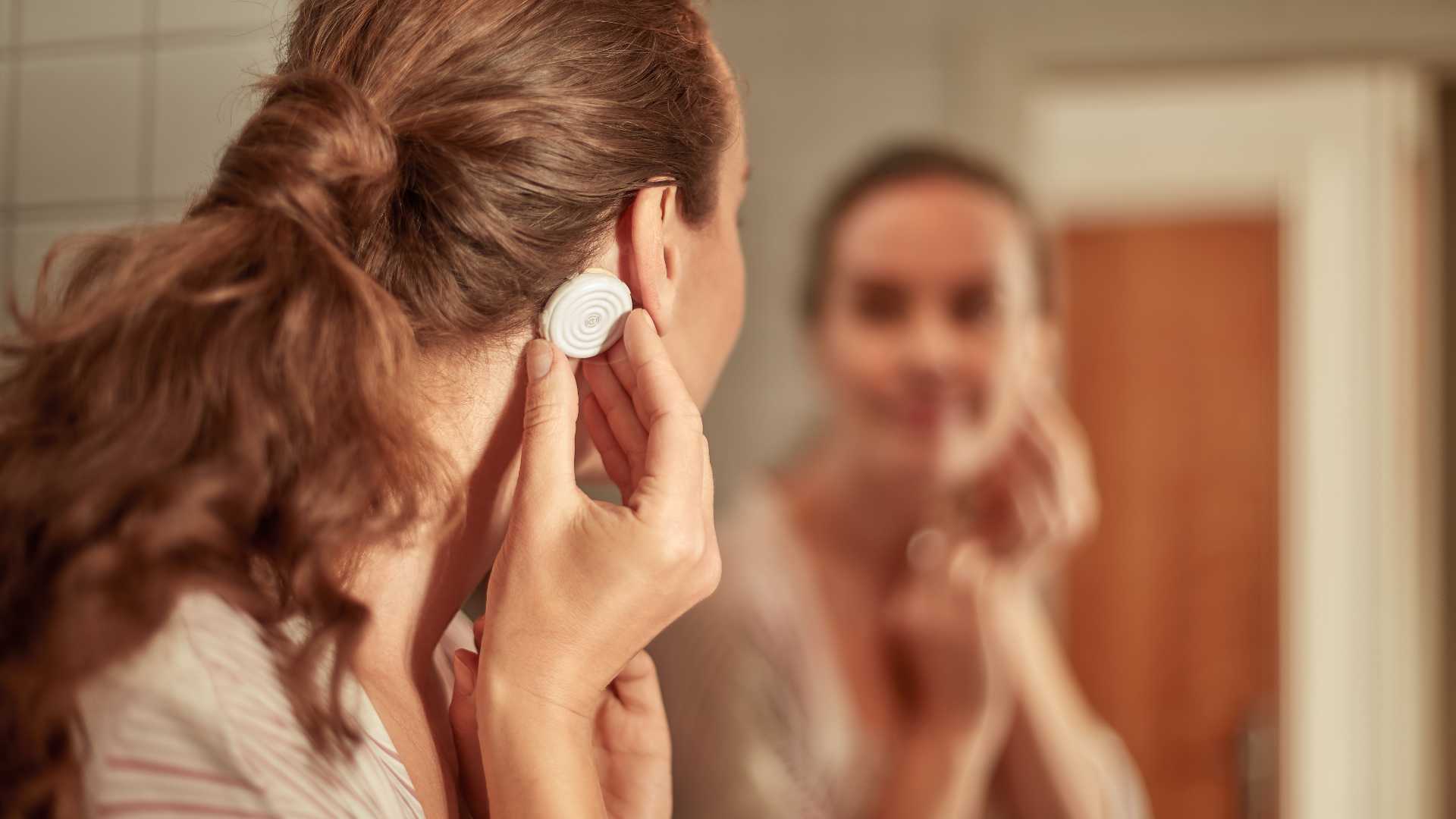
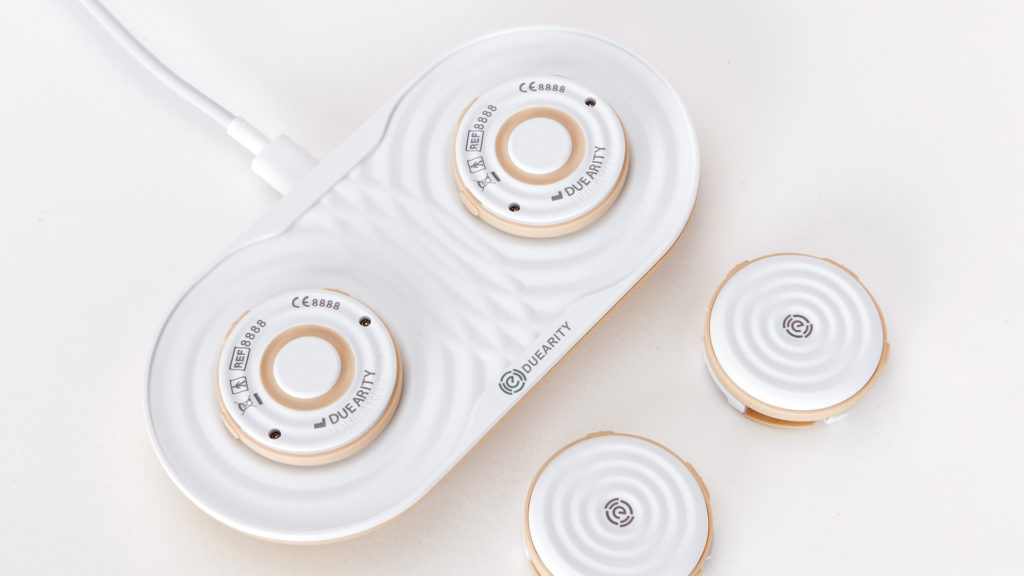
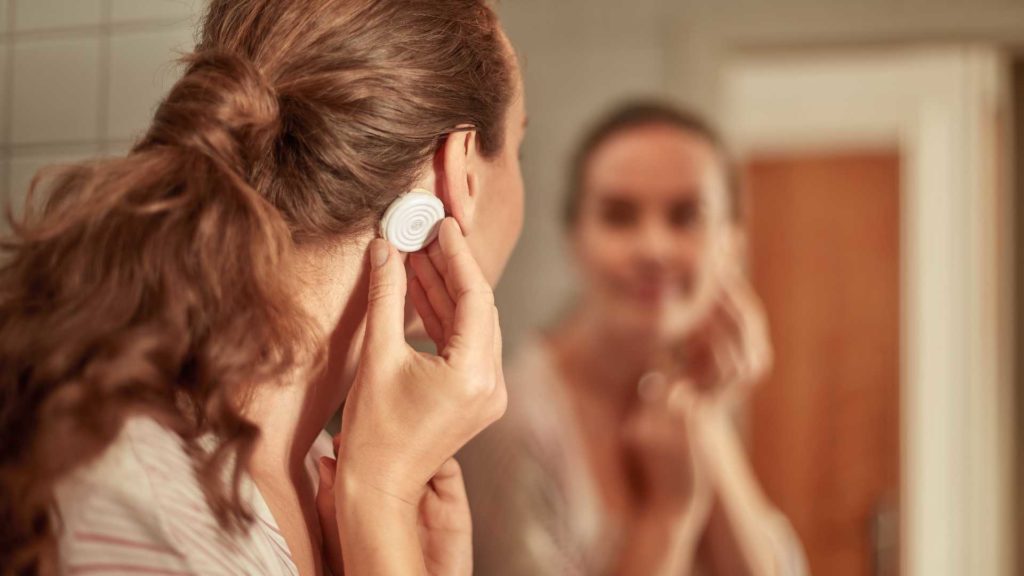















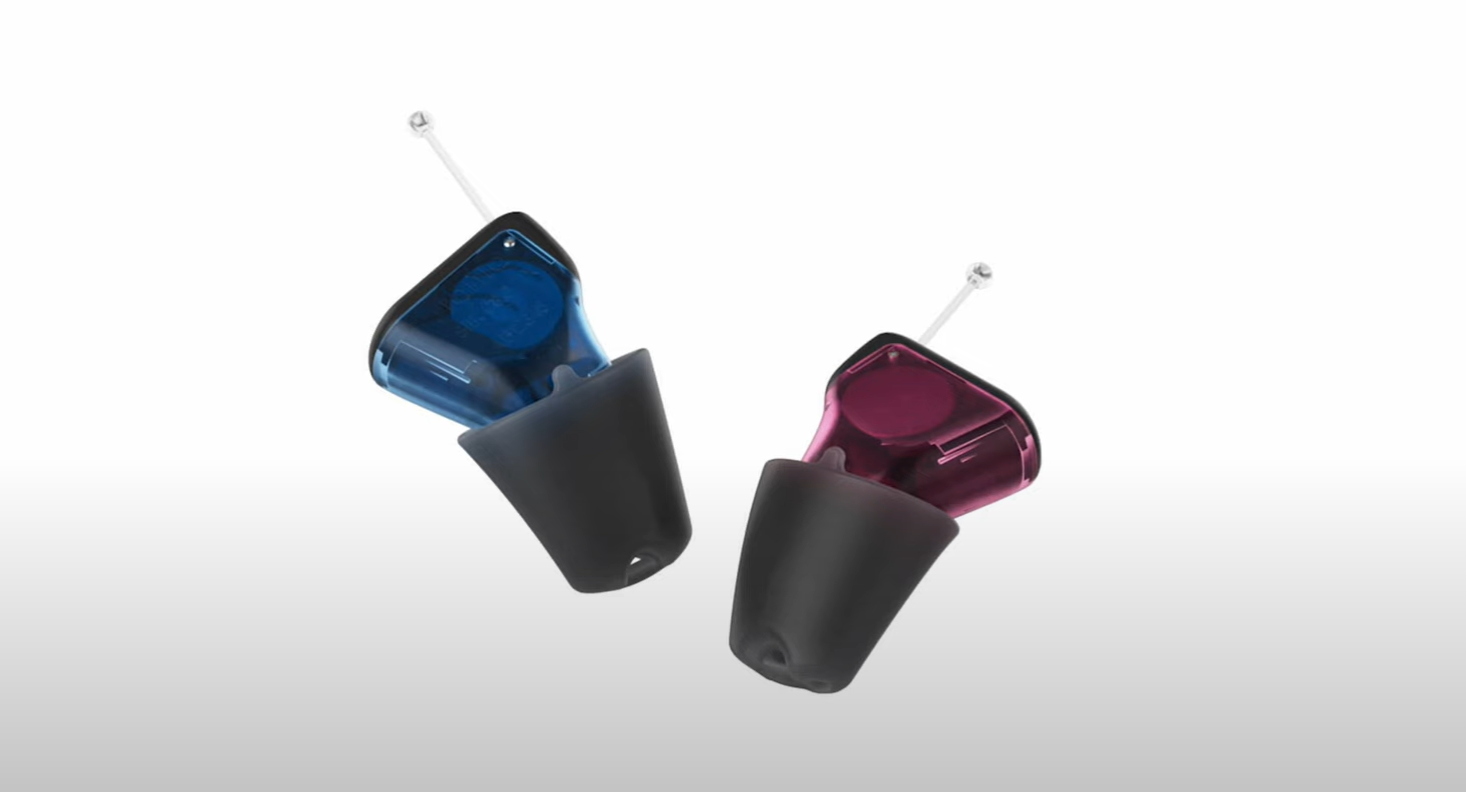


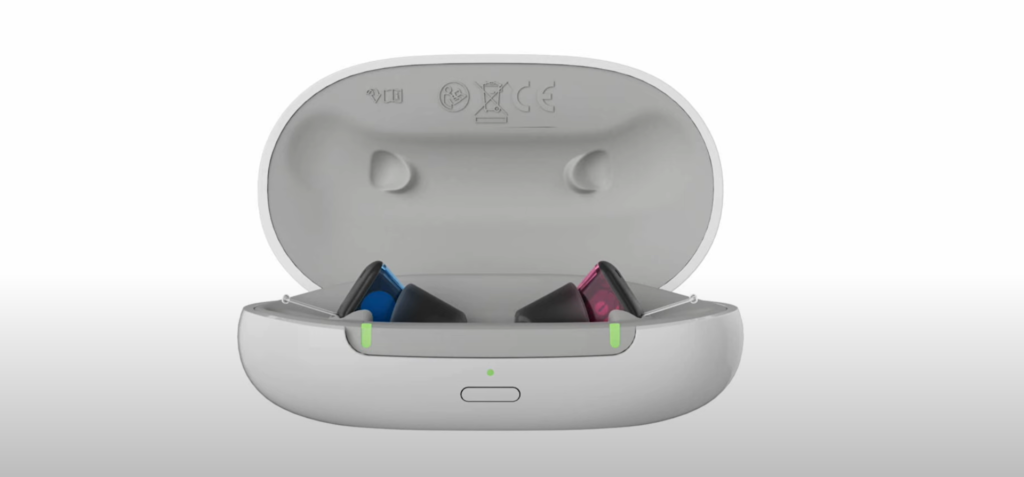
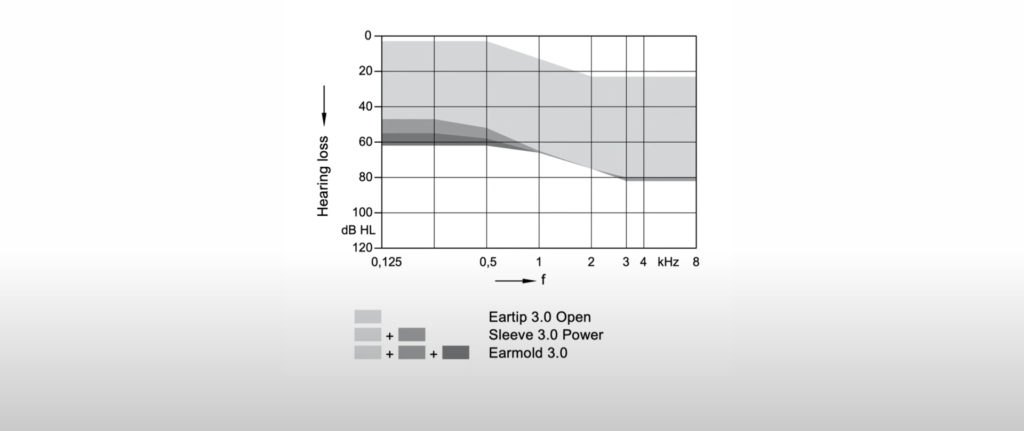
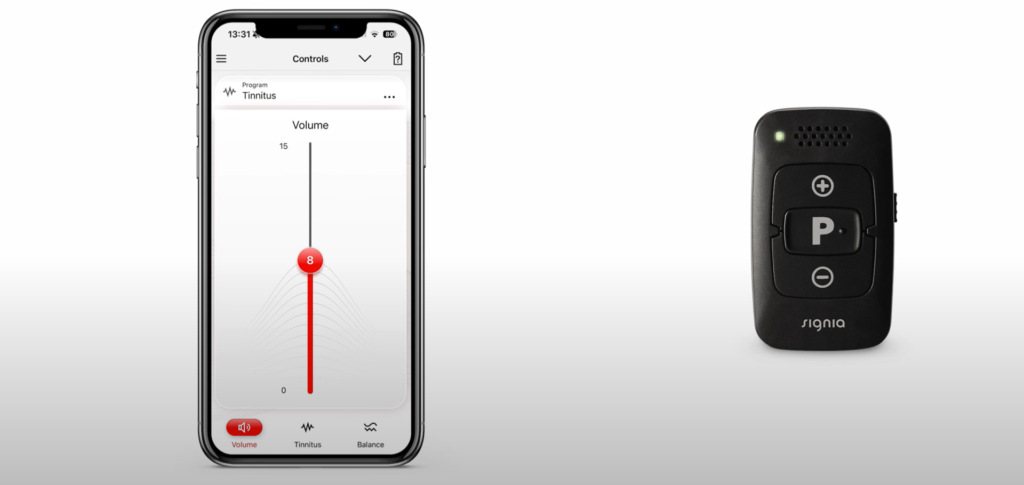










Recent Comments